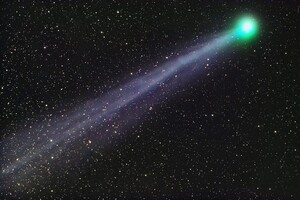But even at maximum convergence, it will be farther from our planet than Mars.

Five years ago, the Hubble Space Telescope noticed a bright comet at the farthest distance from the Sun, it was between the orbits of Uranus and Neptune. In mid-July, this incredible spaceball will approach the Earth at the shortest possible distance, according to CNET.
Read also: Ukrainian astronomers have discovered five comets from another stellar system
Comet C/2017 K2 will be at the closest point to our planet on July 14. But even then, it will be farther from Earth than the average distance to Mars. Despite the large size of the celestial body, it will be difficult to see even with small telescopes.
It is unknown at this time how large the comet's nucleus is. According to various estimates, its diameter is estimated in the range from 18 to 161 kilometers. This means that it is somewhere in between just the largest and largest comet known at the moment, such as the comets of Hale-Bopp and Bernardinelli-Bernstein.
The size of the tail of the object is also unknown. Early observations show that the tail of the C/2017 K2 stretches for a distance of 130-800 thousand kilometers. This is approximately equal to the width of one or six Jupiters.
After approaching the Earth on July 14, the comet will continue to move towards the Sun, approach it at a minimum distance, and then begin to return to the outer regions of the solar system. However, comets can behave unpredictably as they approach the star. They can become more active and brighter, or they can fall apart.
Be that as it may, the July rapprochement is our only chance to meet C/2017 K2. Its orbit is so large that next time it will approach our planet only in a few million years.
Recall, in December, Leonard's comet approached Earth . It was discovered last January by astronomer Greg Leonard, who probably spent the last 35,000 years traveling to the Sun. It is an ultrafast comet, moving at a speed of about 71 kilometers per second.
On December 12, the comet came as close as possible to the Earth, and 3 approached the minimum distance from the Sun, and then left our system forever.




